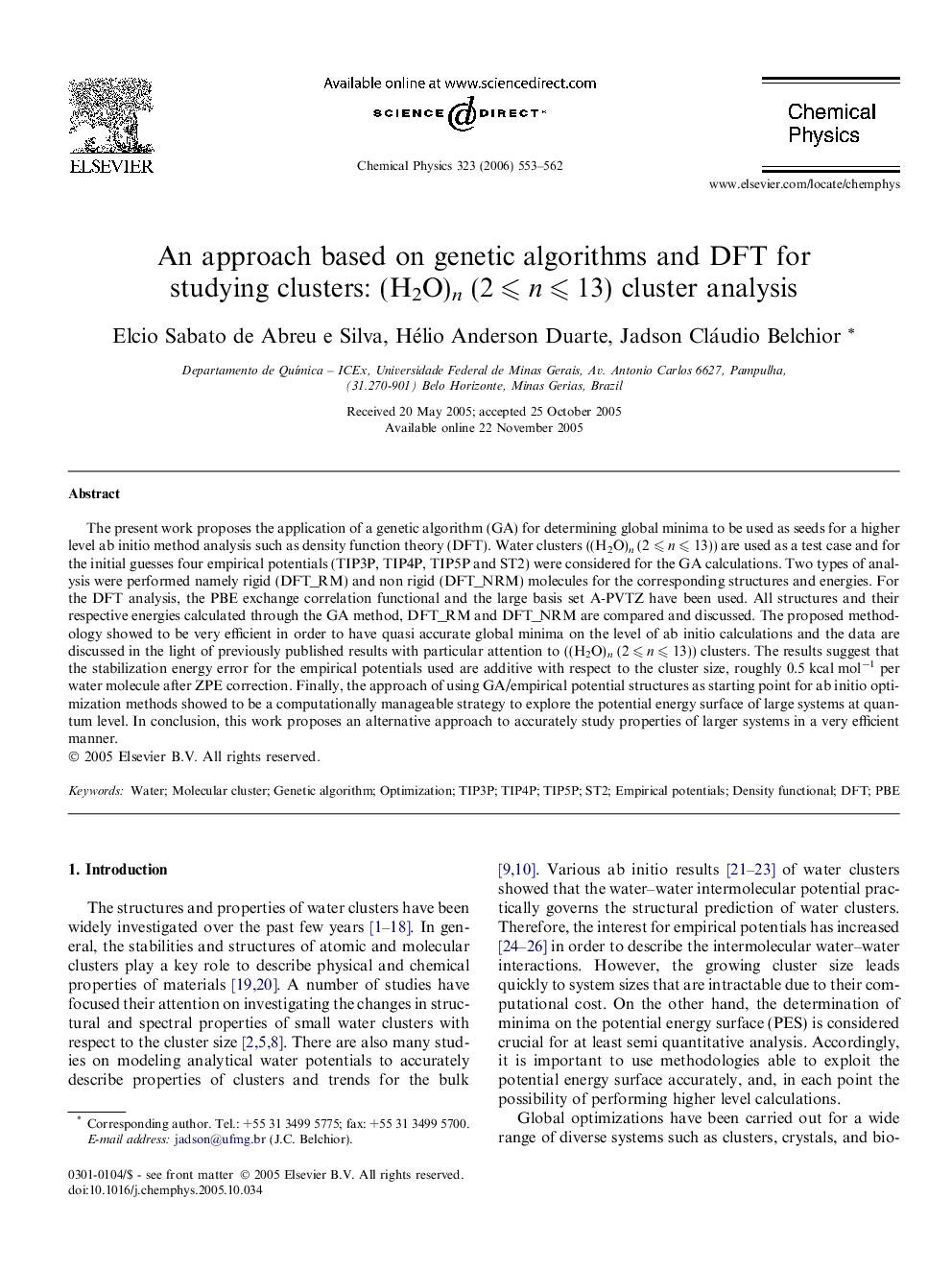| Article ID | Journal | Published Year | Pages | File Type |
|---|---|---|---|---|
| 5377174 | Chemical Physics | 2006 | 10 Pages |
Abstract
The present work proposes the application of a genetic algorithm (GA) for determining global minima to be used as seeds for a higher level ab initio method analysis such as density function theory (DFT). Water clusters ((H2O)n (2 ⩽ n ⩽ 13)) are used as a test case and for the initial guesses four empirical potentials (TIP3P, TIP4P, TIP5P and ST2) were considered for the GA calculations. Two types of analysis were performed namely rigid (DFT_RM) and non rigid (DFT_NRM) molecules for the corresponding structures and energies. For the DFT analysis, the PBE exchange correlation functional and the large basis set A-PVTZ have been used. All structures and their respective energies calculated through the GA method, DFT_RM and DFT_NRM are compared and discussed. The proposed methodology showed to be very efficient in order to have quasi accurate global minima on the level of ab initio calculations and the data are discussed in the light of previously published results with particular attention to ((H2O)n (2 ⩽ n ⩽ 13)) clusters. The results suggest that the stabilization energy error for the empirical potentials used are additive with respect to the cluster size, roughly 0.5 kcal molâ1 per water molecule after ZPE correction. Finally, the approach of using GA/empirical potential structures as starting point for ab initio optimization methods showed to be a computationally manageable strategy to explore the potential energy surface of large systems at quantum level. In conclusion, this work proposes an alternative approach to accurately study properties of larger systems in a very efficient manner.
Keywords
Related Topics
Physical Sciences and Engineering
Chemistry
Physical and Theoretical Chemistry
Authors
Elcio Sabato de Abreu e Silva, Hélio Anderson Duarte, Jadson Cláudio Belchior,
